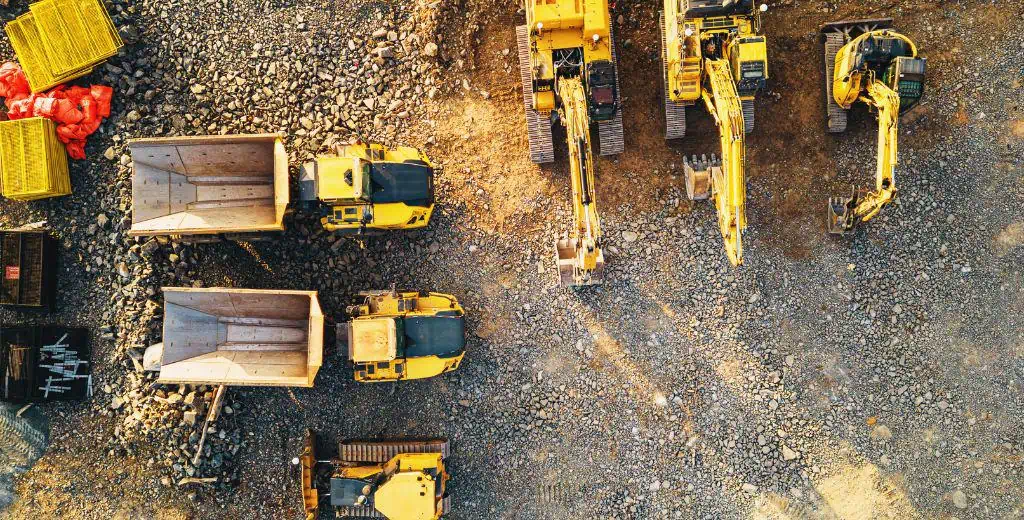What Is Industrial Outdoor Storage (IOS)?
Shortcuts
- Industrial outdoor storage (IOS) refers to the outdoor storage of industrial goods, equipment, vehicles, and materials on a commercial or industrial property.
- Key advantages of IOS include lower development costs and greater flexibility in storage capacity, while disadvantages include weather exposure and security risks.
- Investors in IOS facilities should prioritize three key metrics: location, market demand, and potential returns.
- Businesses that require outdoor storage for large, bulky, or heavy items like vehicles, equipment, and construction materials frequently use IOS facilities.
Understanding Industrial Outdoor Storage
Industrial outdoor storage refers to the outdoor storage of industrial goods, equipment, vehicles, and materials on a commercial or industrial property. This form of storage is particularly useful for items that require no special protection from the elements or are too large to fit into conventional indoor spaces.
IOS can accommodate a wide variety of items, including (but not limited to):
- Vehicles: Trucks, trailers, and construction machinery.
- Equipment: Heavy machinery, forklifts, and cranes.
- Raw materials: Gravel, lumber, steel, and other building materials.
- Agricultural products: Fertilizers, farm supplies, farming equipment.
- Miscellaneous items: Warehouse inventory or overstock,. containers, storage tanks, and other large industrial goods.
Typically, properties with large, undeveloped land areas zoned for industrial use are ideal for IOS. These sites should have the necessary infrastructure to support heavy equipment and large vehicles.
How Industrial Outdoor Storage Works
The operational setup of an IOS facility should be well-organized to maximize space efficiency and accessibility.
Key characteristics of IOSes include:
- Topography: Most IOS properties consist of land that has been cleared and graded flat. The surface is either paved with concrete or asphalt, or covered with compacted gravel or stone dust. Concrete is the preferred surface material, as it’s less likely to tip or to sink, and has a more uniform surface consistency.
- Accessibility: Industrial storage sites should account for proximity to major highways, industrial areas, and the overall logistics network. Accessibility to transport routes and urban centers can enhance the facility’s appeal to potential tenants.
- Size: Many IOS properties are divided into individual parking spaces, racks, or fenced areas for storage. Dimensions vary depending on the average item size, but spaces are commonly 20×30 feet or larger. Internal access roads are at least 24 feet wide for easy two-way vehicle traffic. Typical IOS sites range from two to ten acres of land with a small building in the front or center of the parcel. The building-to-land ratio, or FAR, is generally less than 20%.
- Security: Common security measures include fencing, surveillance cameras, security personnel, and advanced access control systems. These measures help prevent unauthorized access and protect the stored items. Property owners may employ after-hours security measures like perimeter cameras, roving guards, and an electronic gate access system.
- Weather planning: Exposure to the elements can affect stored materials, leading to potential damage or degradation. Proper planning, such as using weather-resistant covers or shelters, may mitigate these effects.
On-site management lives in an apartment or house on the property and oversees daily operations from an office building.
Pros and Cons of Investing in IOS
As with any property type and investment strategy, there are numerous advantages and disadvantages of buying, building or managing an Industrial Outdoor Storage property.
Pros
One clear benefit of IOS is lower development costs compared to indoor storage facilities. The costs to get an IOS site ready for occupancy are typically “basic,” with minimal construction headwinds and fewer supply chain constraints procuring materials, as roofed square footage is only a small portion of the site. Maintenance is also cheaper long-term for paved outdoor areas versus enclosed structures.
Additionally, IOS properties are highly scalable—storage capacity can flex up or down by adjusting space allocation. This makes IOS appealing to growing businesses. The open layout also allows for easy drive-up access and quickly retrieves stored goods when needed.
Lastly, IOS provides tenants with more flexible lease terms than traditional warehousing. Many IOS operators offer shorter-term, 1- to 3-year leases, which can be attractive to businesses with fluctuating storage needs. Longer-term, 5- to 10-year leases are also common for anchor tenants.
Cons
Being outdoors means stored items have more exposure to weather risks like sun damage, moisture, and temperature extremes. Over time, this could degrade certain materials if not adequately protected.
However, some IOS facilities incorporate covered canopy structures to protect a portion of the stored goods from direct weather exposure. This allows tenants to store items more sensitive to the elements, like finished goods or electronics, under a shielded area while exposing bulkier equipment and materials.
This still leaves a huge part of the IOS open, which makes securing it difficult and may require robust (and sometimes creative) security measures. This may include perimeter fencing, surveillance cameras, and on-site personnel.
When storing materials outside, regulatory considerations include zoning compliance and environmental protections, which may vary from jurisdiction to jurisdiction. For example, IOS facilities are allowed under the zoning codes I-1 and I-2 in Atlanta, GA, but many municipalities around the country have tried to limit or restrict IOS uses, viewing them as undesirable land uses that are not aesthetically pleasing.
In addition, IOS facilities are at risk for environmental hazards. For example, if stored materials are not properly contained, they can leach into the soil or contaminate nearby water sources, leading to costly cleanup and environmental remediation efforts.
Finally, property and liability insurance are necessary for IOS facilities, adjusted for the higher risks associated with outdoor storage. Investors must account for these higher operational costs and risks compared to indoor storage facilities.
Key Considerations for Real Estate Investors
Before investing in an industrial outdoor storage facility, it’s a good idea to consider the following:
Location
First, location is everything. The proximity of your IOS facility to transportation hubs, urban centers, and major roads can make or break its success. Tenants want easy access to their stored goods, so it’s crucial to identify locations that check all the right boxes. A thorough location analysis will help you pinpoint the most strategic sites for your IOS investment.
For example, since most industrial vehicles, such as semi-trucks, are traveling along major highways, a logical location for a semi-truck parking facility would be near a major road, with ample space to fit plenty of parking spots while maintaining space for a large enough turn radius.
Market Demand
Next, you need to understand the local market demand for outdoor storage. This means digging into the needs of local industries and identifying any gaps in the market that your IOS facility can fill. For example, areas with a strong industrial base and reliance on e-commerce are likely to have higher demand for IOS.
Investment Costs vs. Return
Finally, crunching the numbers and evaluating the investment costs versus potential returns is crucial. While the lower construction costs of IOS facilities can be appealing, you need to consider the long-term profitability and any additional costs related to security and maintenance. By structuring favorable leases, such as triple net leases, you can increase stability and reduce tenant improvement costs, ultimately enhancing your return on investment.
Frequently Asked Questions: Industrial Outdoor Storage
What types of businesses typically use IOS facilities?
Businesses that require outdoor storage for large or bulky items, such as contractors, landscapers, and construction companies, frequently use Industrial Outdoor Storage (IOS) facilities. Manufacturers and distributors who need to store inventory or equipment, as well as logistics and transportation companies, also use them. Additionally, businesses that require outdoor storage for vehicles, large machinery, or other equipment can use IOS facilities.
How do IOS facilities compare to traditional indoor warehouse storage in terms of cost and flexibility?
One of the key advantages of industrial outdoor storage is its significantly lower development and operating costs compared to traditional indoor warehouses. For example, IOS facilities do not require the same infrastructure and climate control systems as indoor storage, allowing for substantial cost savings.
Additionally, the open-air layout of IOS properties offers greater flexibility—storage spaces can be easily reconfigured to accommodate changing tenant needs or different types of goods. This makes IOS an attractive option for businesses with fluctuating storage requirements.
Can IOS facilities be customized to meet specific business needs?
Yes, IOS facilities can be customized to meet specific business needs.
Many IOS facilities offer flexible lease terms and can accommodate various storage requirements, from small to large. They may also provide value-added services, such as inventory management, logistics support, or equipment maintenance, to help businesses optimize their storage operations.

Some companies, such as Amazon, already use robot process automation (RPA) in warehouses and storage facilities.
Additionally, some IOS facilities may offer customized storage solutions, such as climate-controlled storage or specialized handling and storage for sensitive or hazardous materials.










